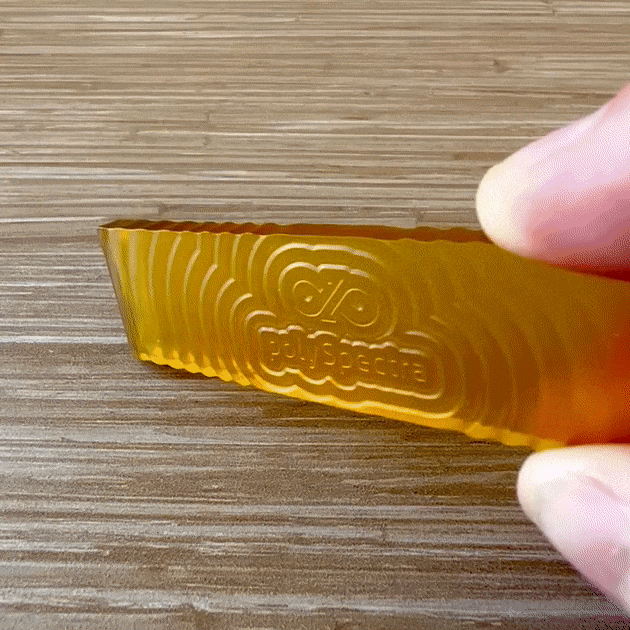Glass Transition Temperature in Photopolymer Resin 3D Printing
The glass transition temperature (Tg) is a critical parameter in the field of photopolymer resin 3D printing, stereolithography, vat photopolymerization, and polymer additive manufacturing. Tg is the temperature at which an amorphous polymer transitions from a hard, glassy state to a soft, rubbery state. This property is essential for understanding the behavior of materials under different temperature conditions and has implications for the mechanical properties, processing, and end-use performance of 3D printed parts. Below is a detailed analysis of selected sources that contribute valuable insights into the importance of Tg in the context of photopolymer resin 3D printing.
Glass Transition Temperature of Polymers
- URL: Glass Transition Temperature of Polymers - Protolabs
- Relevance: This source provides a foundational understanding of Tg, explaining its significance in plastic injection molding, which is closely related to 3D printing. It distinguishes between amorphous and semi-crystalline polymers, which is crucial for material selection in 3D printing.
- Reliability: Protolabs is a reputable company in the digital manufacturing space, and their design tips are grounded in practical industry knowledge.
- Significance: The source is significant for its clear explanation of how Tg relates to a polymer’s mechanical properties, such as tensile strength, impact resistance, and modulus of elasticity. It also discusses the operational temperature range, which is vital for 3D printed parts that may be subjected to various temperature environments.
Glass Transition Temperature from the Chemical Structure of Conjugated Polymers
- URL: Nature Communications Article
- Relevance: This article discusses the relationship between the chemical structure of conjugated polymers and their Tg. It is relevant for understanding how modifications in polymer chemistry can influence Tg and, consequently, the properties of 3D printed parts.
- Reliability: Published in Nature Communications, this peer-reviewed article is a reliable source of scientific information.
- Significance: The article is significant for its method of predicting Tg using a single adjustable parameter, which could be instrumental in designing new photopolymer resins with desired Tg values for specific applications in 3D printing.
Vat-Photopolymerization of Ceramic Materials
- URL: Frontiers in Materials Article
- Relevance: This source explores the applications of vat-photopolymerization in producing ceramic materials, which often require a thorough understanding of Tg for successful printing and post-processing.
- Reliability: Frontiers in Materials is a well-regarded journal, and the article provides a comprehensive review of current applications and challenges in vat-photopolymerization.
- Significance: The source is significant for its discussion on the operational steps of SL and DLP processes, including the importance of Tg during the debinding and sintering stages, which are critical for achieving the desired mechanical properties in ceramic 3D printed parts.
Additive Manufacturing
- URL: ScienceDirect Article on Vat Photopolymerization
- Relevance: This article provides an overview of vat photopolymerization processes and applications, which are directly related to the importance of Tg in 3D printing.
- Reliability: ScienceDirect is a leading platform for peer-reviewed literature, making this source reliable for academic and industrial research.
- Significance: The article’s focus on the processes and applications of vat photopolymerization makes it significant for understanding the role of Tg in the overall performance and quality of 3D printed parts.
Photopolymerizable Resins for 3D Printing
- URL: Springer Article on Photopolymerizable Resins
- Relevance: This work reviews the current knowledge on DLP/LCD methods for printed acrylate resins, which are often used in 3D printing. It discusses the influence of resin chemistry and printing parameters on the mechanical properties of printed parts, including Tg.
- Reliability: Published by Springer, this article is part of a reputable journal that provides a reliable source of information on materials science.
- Significance: The source is significant for its detailed analysis of how different components, such as monomers and photoinitiators, affect the Tg and mechanical behavior of photopolymerizable resins, which is crucial for optimizing 3D printing processes.
Xometry’s Guide on Glass Transition Temperature
- URL: Xometry’s Resources on Tg
- Relevance: Xometry’s guide provides insights into the importance of Tg in polymer processing and 3D printing, highlighting how it affects mechanical and thermal characteristics.
- Reliability: Xometry is a trusted custom manufacturing platform, and their resources are based on industry experience and knowledge.
- Significance: The guide is significant for its explanation of how Tg relates to the behavior and properties of polymeric materials, which is essential for material selection and process optimization in 3D printing.
PolySpectra on Glass Transition Temperature
- URL: PolySpectra’s Explanation of Tg
- Relevance: PolySpectra’s content on Tg is directly related to resin 3D printing, discussing the challenges of high Tg photopolymers and their brittleness.
- Reliability: PolySpectra is a company specializing in advanced materials for 3D printing, making their insights reliable for practical applications.
- Significance: The source is significant for its focus on the trade-offs between high Tg values and material brittleness in 3D printing, which is a key consideration for producing durable and functional parts.
Conclusion
The glass transition temperature is a pivotal concept in the field of photopolymer resin 3D printing, affecting the processing, mechanical properties, and end-use performance of printed parts. The sources provided offer a comprehensive understanding of Tg from both a theoretical and practical perspective, covering its chemical basis, influence on material behavior, and implications for 3D printing processes. Researchers and practitioners in the field of additive manufacturing will find these sources invaluable for optimizing material selection and printing parameters to achieve desired outcomes in their 3D printed products.
